[Here’s a link to other forays around my map.]
Out into the delirium of spring, riding fast and happy towards today’s grid square. The first blush of yellow in the oilseed rape fields. The first bright sulphurous yellow Brimstone butterfly of the spring, a yellow that put the ‘butter’ into butterfly. In Every Day Nature Andy Beer suggests you note the date you first spot one and call that your Brimstone Day. I like that idea. My Google Calendar reminds me each year of the date of the first daffodil, the first green leaf on the tree by my shed, the first arrival of the swifts. I enjoy seeing the differences year after year. It is a start, but I’m a long way from Gilbert White whose detailed observation of his village resulted in The Natural History of Selborne, which is still in print 230 years later.
His book, compiled of letters written to fellow naturalists Thomas Pennant and Daines Barrington, is reputed to be, after the Bible, Shakespeare and Pilgrim’s Progress, the most published book in the English language. The Natural History of Selborne was published in 1789 and since then has never been out of print, and has been translated into numerous other languages, including a German version as early as 1794. It is a remarkably accurate mirror held up to life in 18th century rural England. Emigrants to Australia or North America carried the book with them to remind them of who they were and where they came from.
In an age without cameras and tape recorders he correctly identified the willow wrens as separate species by their songs and by minute differences in their plumage. He did this through observation, what he called ‘observing narrowly’, and then carefully recording what he saw. His scientific fame rests on his minute observation of all nature in his garden, on his walks and his rides in the countryside. He noticed, for example, that owls hooted in B flat. Nothing escaped his notice or his notebook.

As I was locking my bike in a churchyard before setting out on foot, I heard the gardener say, ‘The other night I was in here late and watched a badger passing through.’ I have been drawn to churches throughout this project, perhaps as they are often a focal hub of a village. Perhaps if it had not been lockdown I would have been in the pubs instead!
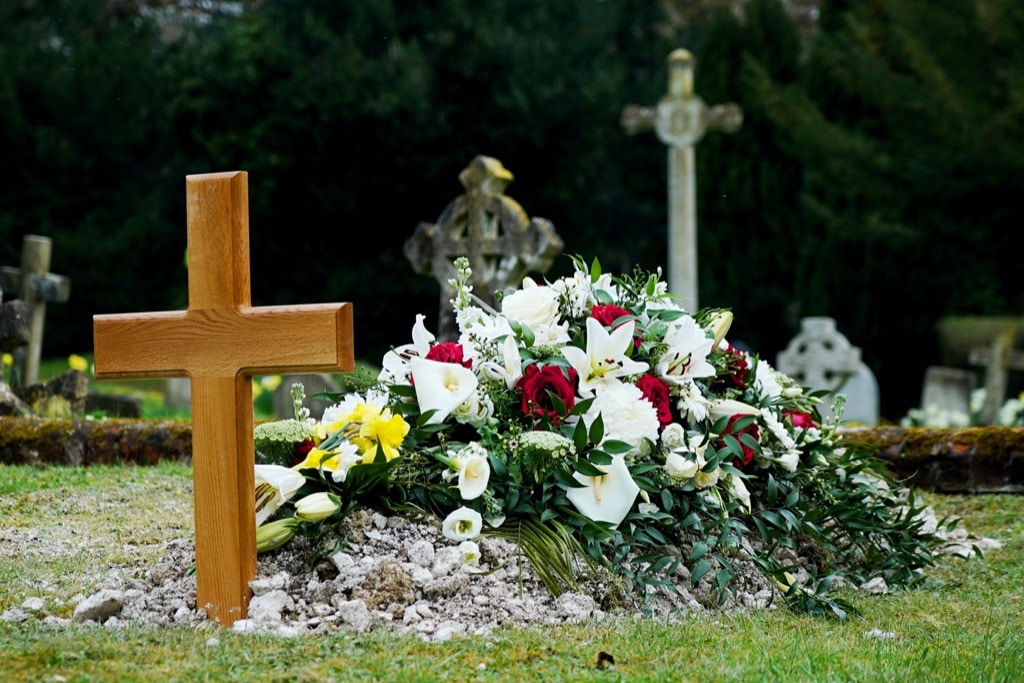
There was a freshly-filled grave, still mounded high and covered with red roses and white lilies. ‘Thank you for 61 happy years together. Goodbye my love,’ read one note. Elsewhere in the graveyard I came upon the resting place of the crime writer Michael Gilbert who managed to write more than 30 novels only during his commute into London. He was quoted as saying that this habit allowed him to ‘carry out a full and normal day’s work as a solicitor, and to devote the evenings and weekends to my family.’ This was an art he had learnt in wartime when, saving electricity as he felt was his duty, he took to reading for his law finals in the light provided by the Tube, three times round the Circle Line.
The war, however, intervened before he was able to become articled as a solicitor. Gilbert served with the Royal Horse Artillery from 1939 to 1945. Mentioned in dispatches in 1943, he was taken prisoner in Africa and later transferred to Italy where, with two companions, he escaped in the confusion of the Italian surrender, later writing about his adventures in The Long Journey Home (1985). He escaped, I learned, at the same time as travel writer Eric Newby, whose book Love and War in the Apennines I enjoyed reading years ago. It is a small world, but also a very large one within my single map.
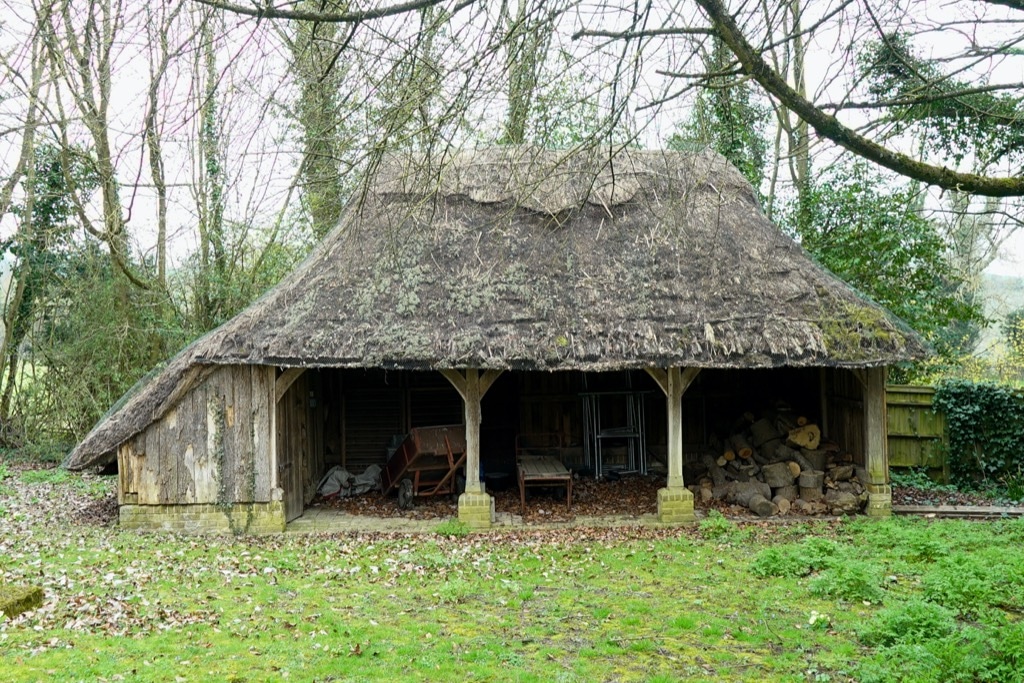
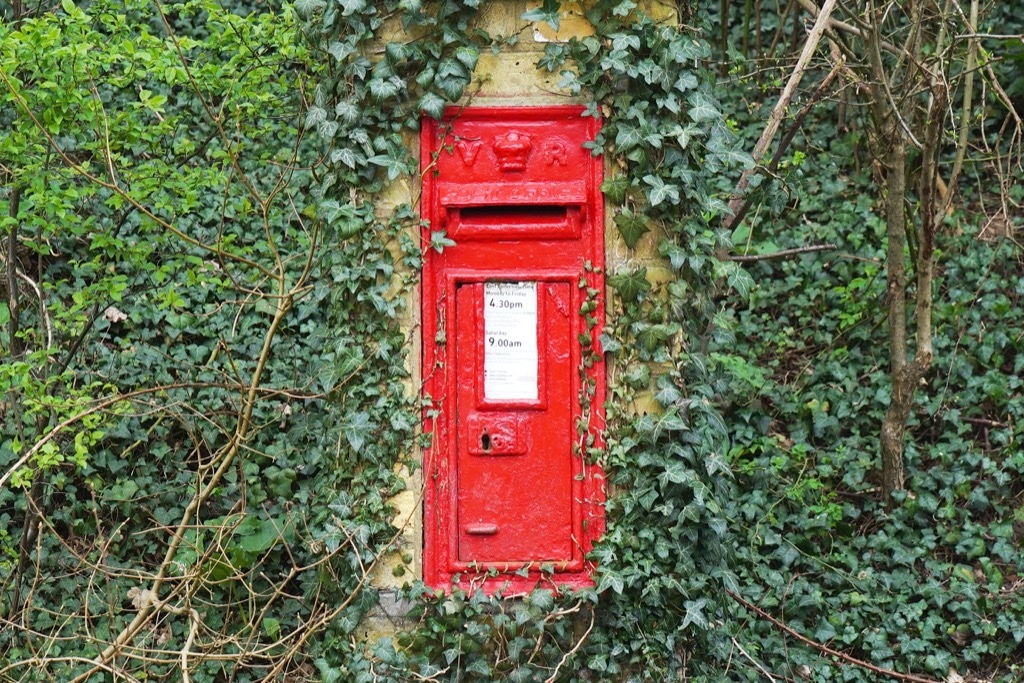
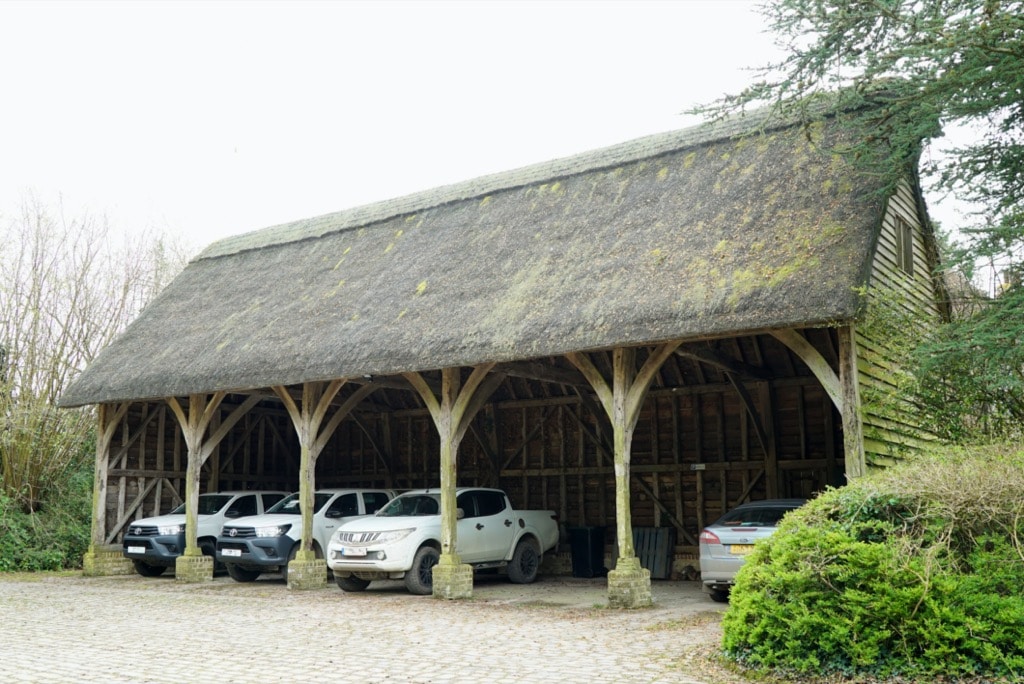
I walked out of the primrose covered churchyard, past a couple of thatched barns and a red Victorian post box wreathed in dark green ivy. I was at the head of a peaceful valley with only a kestrel hovering ahead. I crossed the beautiful village cricket pitch (oh come on, summer!) and began climbing the side of the valley. A sign on the village hall commemorated the date when this valley was saved from being commandeered by the Ministry of Defence for mine-laying and infantry training. Good news, I decided, for this area was an extremely beautiful assortment of green valleys and patches of woodland.
Yet these valleys have changed tremendously in the last couple of years, with thousands and thousands of grapevines planted across hundreds of acres of what was previously an organic farm. In every direction the land was covered with rows and rows of small vines, each staked out and protected from rabbits with a green (hopefully biodegradable) plastic sheath. Producing wine in the south of England is a mark of the constantly evolving countryside we live in.

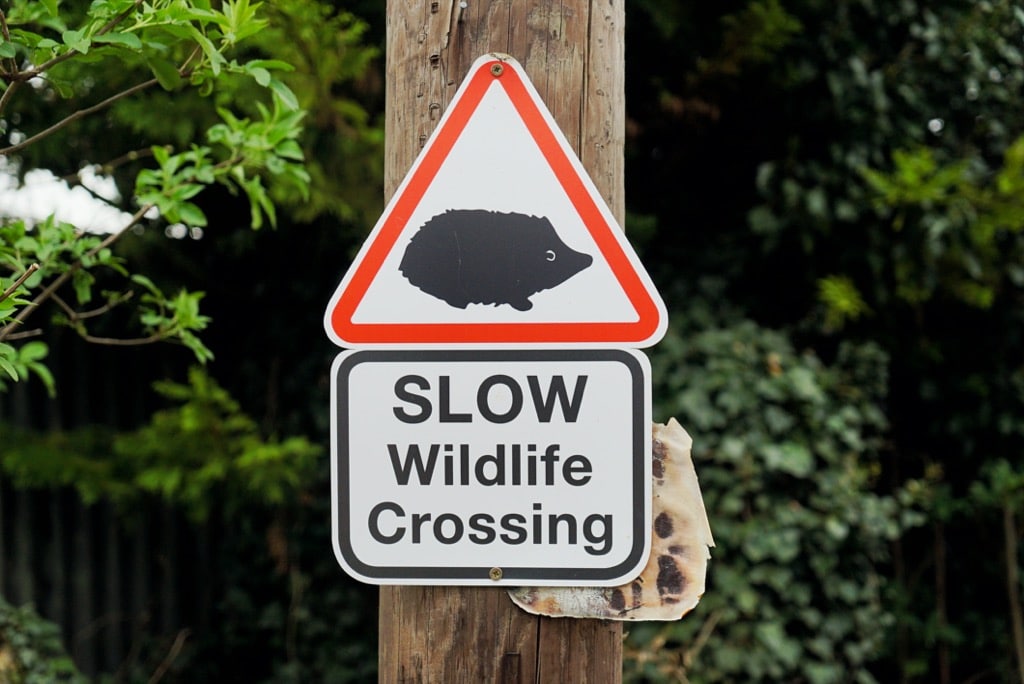
The Iron Age inhabitants of England imported considerable quantities of wine, but it seems likely that it was the Romans who introduced the first vineyards to the country. A few vineyards were also cultivated during the Saxon period, but it was the Norman nobles who arrived with William the Conqueror in 1066 who really led to the introduction of successful viticulture and English wine making. Domesday Book thus records more than 40 vineyards, with the area to the west of London being particularly prominent.
Wine making expanded considerably in England during the Middle Ages, particularly on monastic and ecclesiastical estates. However, the acquisition of Aquitaine by the crown in the middle of the 12th century, through the marriage of Henry to Eleanor of Aquitaine, provided a more reliable source of wine for England’s growing urban population and nobility, and this, together with a worsening climate in the later medieval period led to a decline in England’s wine making.
It was not really until the second half of the 20th century that commercial grape growing and wine making really began to take off. By the mid-1990s there were some 400 vineyards in the UK. England’s cool climate, closely similar to that of the famous vineyards of Champagne in northern France, is especially well suited to producing grape characteristics required for successful English sparkling wine production.
With the warming effects of climate change and the enterprise of England’s wine makers, it seems likely that the quality of our wine will go from strength to strength in the 21st century.
After climbing the steep chalk valley side I paused on a bench to look back down over the vines to the cricket pitch. Overhead I heard one of my favourite bird calls, the skylark, which inspired the musical composition of Ralph Vaughan Williams.
First the basics: the Eurasian Skylark (Alauda arvensis) is larger than a house sparrow, and smaller than a starling; breeds from Britain to Siberia, and south to India and North Africa; and nests on the ground in open areas: meadows, salt marshes, heaths and farmland. The nest is a cup on the ground made from grass and hair.
Unlike most perching birds, the male sings in flight, and what a flight: he starts up suddenly from the ground, goes up high in the sky––50 to 100 meters––and hovers there for a few minutes, then plummets down to land on the ground. And all this time he is singing: while he rises so high that he may be scarcely visible, while he stays aloft, while he plunges to the earth again. “…drowned in yonder living blue/The lark becomes a sightless song “ (Tennyson, In Memoriam).
If you get up very early in Britain from April to August, and out into an area of grassland, farmlands, or marsh, this is likely the most prominent bird you will hear, starting even before the sun rises. (They sing throughout the day, but it’s most striking in the hush of dawn.)
The bird sings not from a perch but while flying, so the song emerges from the sky above, as the night flees and the first glow of dawn appears. It becomes associated with all the possibilities of a new day, the freshness of dawn, the light banishing darkness.
- “I rose early. I went into my garden before breakfast and stood listening, but towards the common there was nothing stirring but a lark.” – H.G. Wells, War of the Worlds
- “Though there was nothing very airy about Miss Murdstone, she was a perfect Lark in point of getting up. She was up (and, as I believe to this hour, looking for that man) before anybody in the house was stirring.” – Charles Dickens, David Copperfield
- “To hear the lark begin his flight,
And singing startle the dull Night,
From his watch-tower in the skies,
Till the dappled dawn doth rise.” – John Milton, L’Allegro, l. 41- “[Spring] When … merry larks are ploughmen’s clocks…” – Shakespeare, Love’s Labour’s Lost V, ii.
New life was bursting out across the valley. Bright blue Speedwell Birdseye flowers crept along the earth; white wood anemone sparkled in the shadows; Celandine flowers beamed like little suns. Peacock butterflies flapped their red wings in the sunshine, winking their bold eyespots. It’s thought that eyespots simply mimic the eyes of predators. They act as a deterrent or a distraction to predators, making attackers think they are suddenly facing a larger and potentially dangerous animal. And although one huge oak caught my attention when I remembered that it’s stark bare branches will soon be covered in green once again until next winter, most of the trees are now pushing out new green leaves.


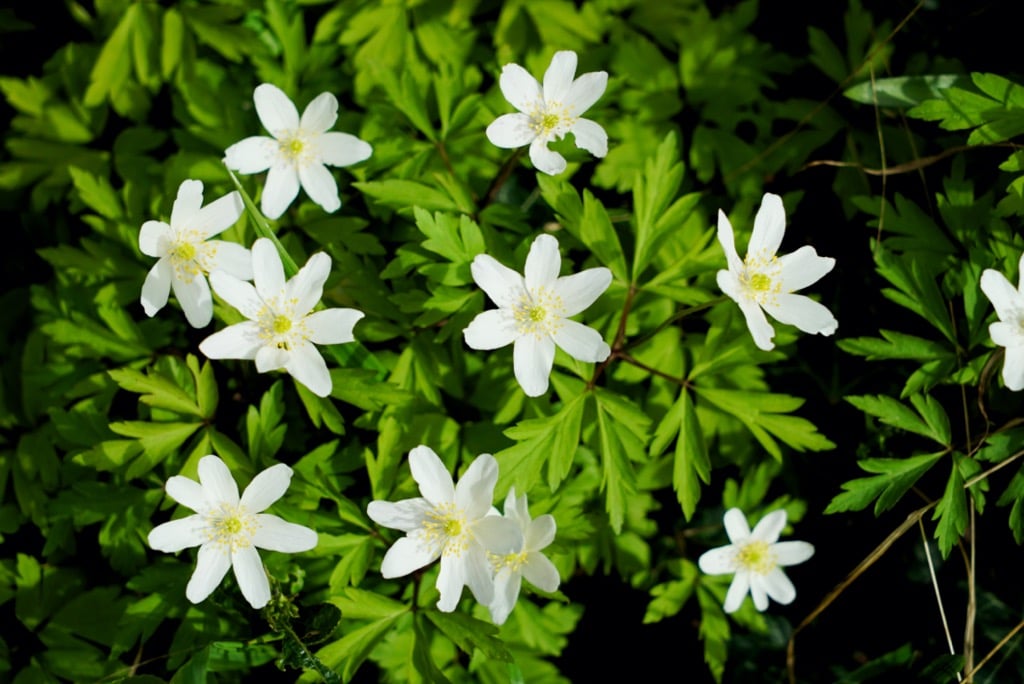
Even though we’re in the spring now, this whole program was set up in the autumn. As the days get shorter in the autumn and the temperatures decline, the tree sets itself up to go dormant and then in the same program sets itself up to burst bud in the spring. And of the two components mentioned, day length and temperature, the one in the autumn that’s most important is night length. That functions as a signal for the plant to begin to shut down.
When the trees make that dormant bud, that hardened bud we see through the winter months that protects the growing tissues underneath from the foul weather, they are set up to grow again in the spring and to make sure they interpret the cues during the winter so that they don’t grow again in the spring at the wrong time. The program that is set up is contingent on having what’s called a “cold requirement”. That is, having a minimum number of days of cold temperature. After this critical number of cold days has passed and, provided the plants are warmed to an adequate temperature, they will burst buds in the spring. Both factors are essential.
God it felt good to be on the move today! I had donned shorts for the first time since last year, the air smelled warm, the sun shone on my back, and the hills and contours broke up the monotony of the skyline and my days. I felt as though I too was coming back to life after a long hibernation. I love it up here.
And there was just so much to look at, everywhere! Here the first bluebell flower of the year, there a dunnock, a woodlouse, a path I hadn’t noticed, a pheasant cry, a huge oak, the sun on my neck. All these things flooding through my mind simultaneously. It was therefore both a relief and something of a struggle when I found a short, mossy stump in the woods on which to try sitting still for an hour. The last time I tried this had been a misty winter day mired in lockdown homeschooling. How might I fare today?
The challenge is to sit on a stump in a forest, drink your coffee and stay there for a whole hour. An hour with a coffee and a good book would be a treat. With your phone it would be easy. Or with a notepad and a pencil. But what about if you had nothing at all to distract you: how would you cope just sitting still for an hour?
It is interesting to consider our relationship with time. The busier you are and the less time you have to spare, the more you should try this, if only just once. If you think that time is racing far too fast to waste an hour sitting on a tree stump, fear not: this hour will feel like an eternity for you!
Set an alarm for an hour, then put your phone and watch out of sight and out of reach. And then you just sit. You, your coffee and the stump. The book Under the Open Skies describes the stump as ‘a symbol of the idea that you sometimes have to leave your head and reach down into your heart.’
With pen and paper in hand I would be more than happy to sip coffee and sit on a stump all day. But with no way to record my thoughts, I instead become aware of the maelstrom inside our heads. There is no escape! One hour sitting on a stump easily includes a dozen practical plans and a handful of emotional mood swings, whilst every minute involves noticing something new for the first time. There is so much going on inside our heads, always. And there is so much to notice and appreciate wherever we decide to sit.
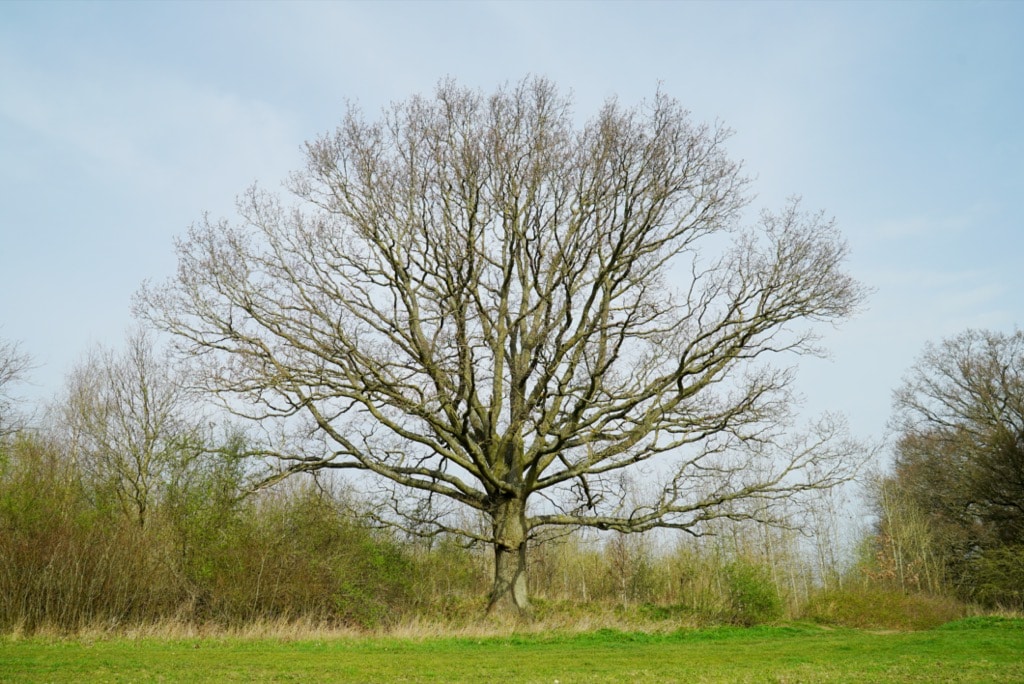
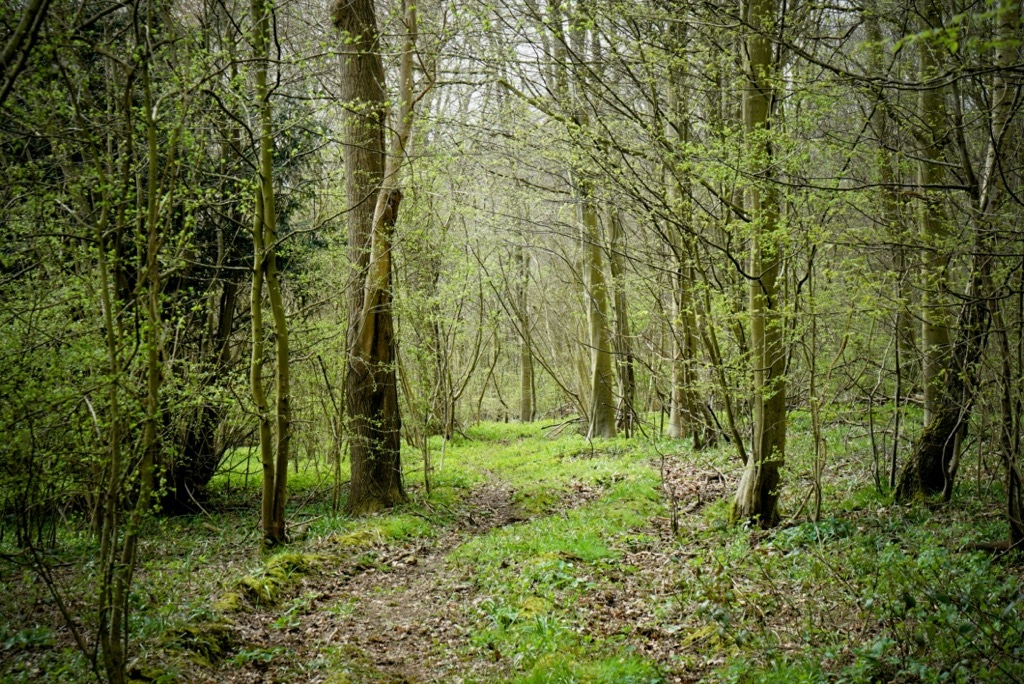
Perhaps you may carry your coffee to the woods with a friend. But I imagine that you’ll go there by yourself, as Mary Oliver prefers. ‘Ordinarily, I go to the woods alone, with not a single friend, for they are all smilers and talkers and therefore unsuitable… I don’t really want to be witnessed talking to the catbirds or hugging the old black oak tree. I have my way of praying, as you no doubt have yours… Besides, when I am alone I can become invisible. I can sit on the top of a dune as motionless as an uprise of weeds, until the foxes run by unconcerned. I can hear the almost unhearable sound of the roses singing… If you have ever gone to the woods with me, I must love you very much.’
Here I am then, alone. Just my, my coffee and your stump. The forest is a stage for solitude. It might be uncomfortable, but we can all benefit from some quiet time. ‘Alone is a fact,’ writes dancer and choreographer Twyla Tharp. ‘Lonely is how you feel about that.’
Sitting on a stump for an hour is similar to the methods of mindful meditation. You are observing what is in your head, but not recording it. And as your thoughts whirl you can only notice them arrive and then allow them to leave. If you are fortunate, who knows, you might settle into a state described by the lovely Gaellic phrase of Ciúnas gan uaigneas, ‘quietness without loneliness.’
In The Runner, Markus Torgeby writes, ‘I must do something about my restlessness. One day I put on several layers of clothes, sit down on a tree stump and do nothing. I must get over this hurdle, I must learn how to do nothing.’ That time, he concluded, ‘was a good investment. Life became greater after that. Food tasted better and the song of the birds in the woods was even lovelier.’
Sitting on a stump in a wood (or on a rock by the ocean, or a bench in a town) is an invitation and a challenge, like William Blake’s Auguries of Innocence, ‘to see a world in a grain of sand and a heaven in a wild flower. Hold infinity in the palm of your hand and eternity in an hour.’
I find that an hour sprawls into a daunting expanse of time. I hear a dozen bird calls and watch a bumblebee rustling in dead leaves. I wonder what is for lunch. I feel the sun on my neck, then close my eyes and allow myself to really pay attention to that warmth. I am certain that the alarm clock has broken and that hours have passed. I squirm. I yearn for the end. But like the last time, I was surprised that my first sensation upon finally hearing the bell was not relief, but disappointment that it is over. Each hour is a substantial, valuable treasure not to be wasted.
The biologist David Haskell watches nature closely, visiting a one-square-metre patch of forest over the course of a year. In The Forest Unseen he writes that he chose his location by ‘walking haphazardly through the forest and stopping when I found a suitable rock on which to sit.’ As always, it does not matter where you go. It matters only that you go. Haskell asked himself, ‘can the whole forest be seen through a small contemplative window of leaves, rocks, and water?’ His rules to himself are simple: visit often, watch a year circle past, be quiet.
One outcome of his watch was ‘to realise that we create wonderful places by giving them our attention, not by finding ‘pristine’ places that will bring wonder to us. Gardens, urban trees, the sky, fields, young forests, a flock of suburban sparrows… Watching them closely is as fruitful as watching an ancient woodland.’
The Forest Unseen concludes with some advice for me on my stump with my steaming coffee. ‘Leave behind expectations. Hoping for excitement, beauty, violence, enlightenment, or sacrament gets in the way of clear observation and will fog the mind with restlessness. Hope only for an enthusiastic openness of the senses.’




Enjoyed this.
I like the idea of an hour on a stump, though not sure that I could manage it. I might have to settle for a thirty minute stint.
Back in the old days, before phones and all of the other distractions, I imagine that it was not uncommon to sit for such a length of time. I have memories of sitting for long periods on a bench, at Scarborough seaside, watching the world go by.
If you think it would be hard for you then you should try it!
If there are clouds I could happily spend an hour! Clouds and some shade – an hour in the sun would wilt me like lettuce and leave me red as a fresh strawberry 🙂